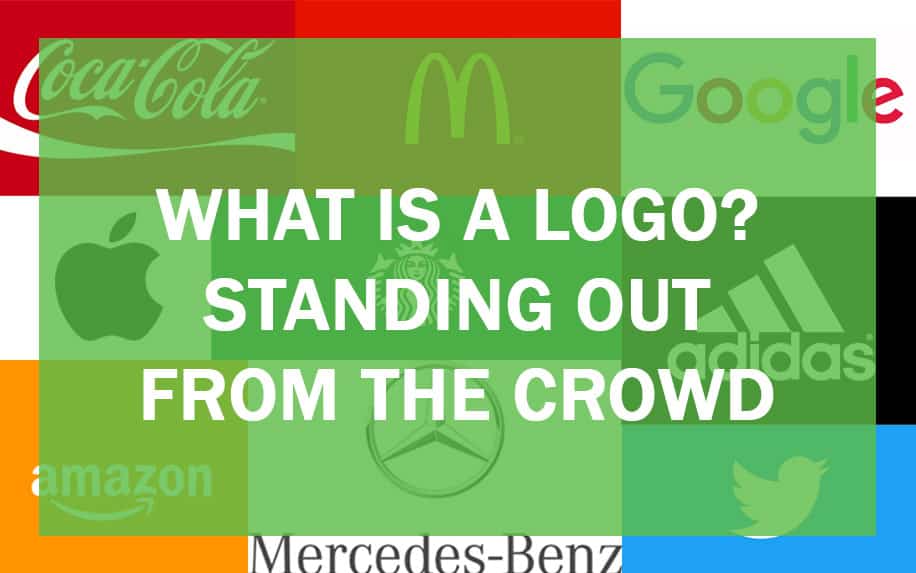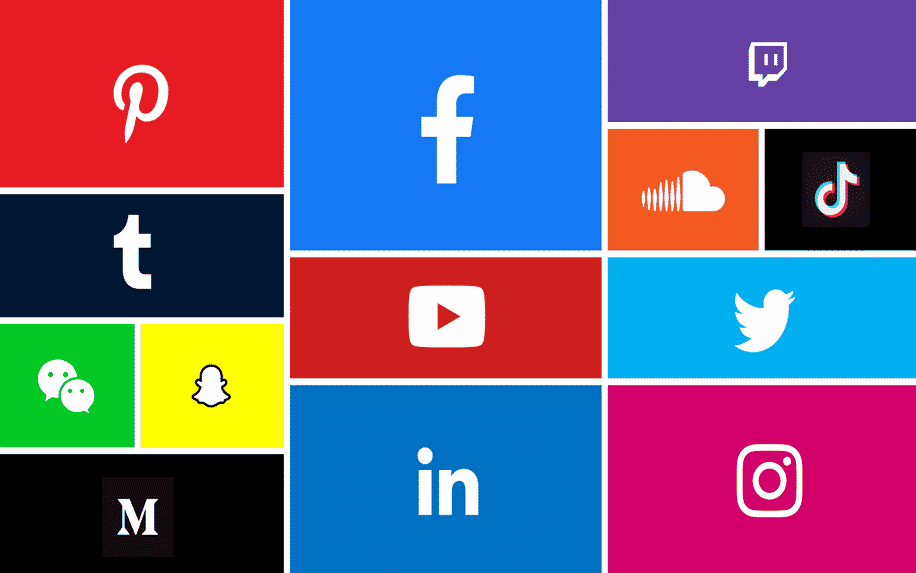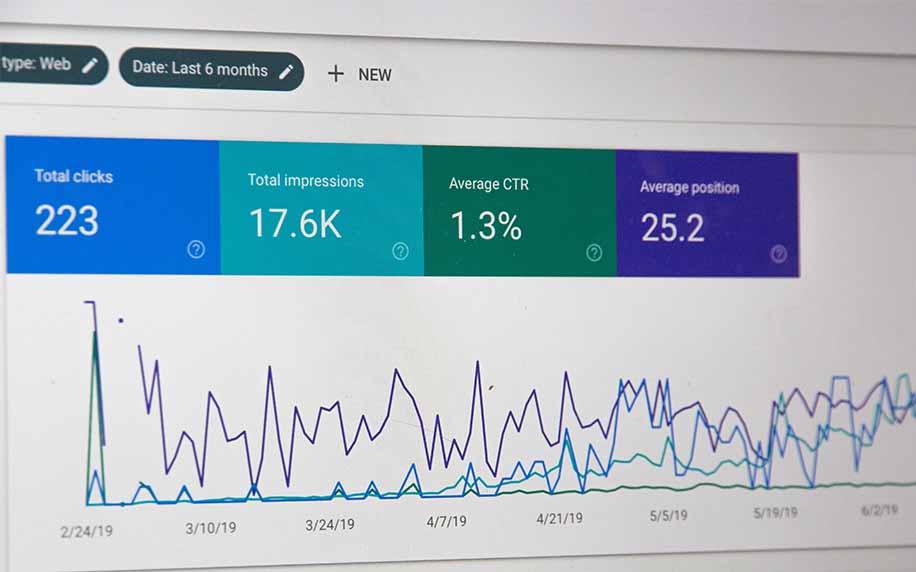What is a logo? If you’ve set up a business you’ll know that telling customers who you are what you’re all about is vital. A logo could be your first, and most important, way of doing this.
The big question: how to make a logo work harder for your business?
Read on….
Table of Contents
What is a Logo?
A logo is a graphical symbol or emblem used to visually represent a company, organization, brand or product. Logos are a key component of branding, acting as the face of a business which conveys their identity and reinforces recognition.
An effective logo encapsulates the look, feel and messaging a brand stands for in an immediately identifiable mark. It becomes synonymous with the emotions and connections a company builds. Consider global brands like Nike with their “Swoosh” or Apple’s iconic half-bitten apple fruit – these visual emblems instantly evoke wider brand perceptions shaped over decades.
At its core, a great logo reflects and resonates with target consumer bases. The colors, fonts, styling choices, geometric forms and embedded symbolism capture core values, personality and positioning a brand desires to own in the minds of prospects. This compact visual package in turn builds differentiation and loyalty across marketing touchpoints. Reinforcing consistent branding and emotion connections tied to that logo over years leads ultimately to higher customer lifetime value.
So in summary, a logo goes beyond just an aesthetic graphical element. It acts as visual shorthand that triggers deeper meaning to shape audience perceptions aligned with strategic goals. Recognizable logos essentially become like trusted friends to the customers they court.


Key Elements of a Successful Logo
- Memorability: A good logo should be memorable and easy to recall. It should leave a lasting impression on the viewer.
- Distinctiveness: A logo should be distinctive and set itself apart from the competition. It should be unique and recognizable.
- Simplicity: A good logo should be simple and easy to understand. It should not be cluttered or overly complex.
- Versatility: A logo should be versatile and work well in different sizes and applications. It should be effective on print, digital, and merchandise.
- Relevance: A logo should be relevant to the brand and its message. It should reflect the brand’s values and personality.
Design Principles
- Color: Color plays an important role in logo design. The colors used in a logo should be carefully chosen to evoke the desired emotions and represent the brand’s identity.
- Typography: The font used in a wordmark logo should be carefully chosen to be legible, stylish, and appropriate for the brand.
- Shape and Form: The shape and form of a logomark logo should be memorable, distinctive, and representative of the brand.
- Negative Space: Negative space, or the empty space around a logo, can be used to create a sense of balance and sophistication.
Psychological Impact
Logos can have a significant psychological impact on consumers. They can influence consumer perception, brand recall, and purchasing decisions. A well-designed logo can create positive associations and build trust with consumers.
Legal Considerations
Logos are protected under copyright law. Businesses should ensure that their logos are properly registered and protected to avoid infringement.
Why is a Logo Important?
A logo is important for your company for several reasons:. Firstly, it’s a direct and easy way to understand what your company’s idea or identity is. Secondly, it allows your company to stand out. A memorable logo can put you ahead of the competition in the minds of consumers.
Lastly, a logo can create brand loyalty between a company and it’s customers. A loyal customer is one you can count on for years.
After all, a great logo is a part of creating that kind of loyalty.

What is a Logo’s Purpose?
The purpose of a logo to grab the customers attention. That’s because people have a lot of information to take in every day.
In fact, there’s so much going on in the average person’s life, a lot of the information around them is ignored and simply becomes background noise.
A striking logo encourages people to tune in and start engaging with a product or service, while a memorable logo removes you from the background noise into a topic a customer is now interested in exploring.
How is a Logo Made?
When making a logo there are several design elements to keep in mind:
Look At Your Competitors
Take a look at how the competition is presenting themselves. Are their logos bright and flashy or more understated? Do they use a flat design or more 3D elements? When looking at competitors, you can get an idea of what you should do to stand out. Try using an online logo designer to easily try out different logo designs and customize your logo.
Your Message
Your logo should communicate a message about your company. Consider your target market and what they respond to, along with your own company’s culture
Functionality
Your logo should be functional, no matter how it’s used. It should work on billboards or business cards, in both colour or black and white. A good logo can be scaled for a variety of formats
Avoid Clip Art
Clip art is unoriginal and generic. You want your logo to be one of a kind, that sets you apart from everyone else in your industry
Don’t Be Too Trendy
A good logo should last a long time. A logo lasting 10 or 20 years isn’t unheard. You shouldn’t rush to redesign your logo just because of some new design trend. Besides trends can quickly change and your new trendy logo can quickly become outdated.
What is a Slogan?
In addition to a logo, a great slogan can also help define your company’s brand. In the simplest terms a slogan is a catchy or memorable phrase associated with your business. To write a good slogan keep these tips in mind
It Should Work With Your Logo. A slogan should be created after the logo and be partly based on it. The two should work together and have a common theme or element
A slogan should be quick, easy to read, and easy to understand. It shouldn’t be more than a sentence long.
If you can make your slogan witty without it coming across as cheesy or lame, do that. People remember jokes and witty phrases. So if humour plays well with your company image and branding, don’t be afraid to use it.
Be Honest. Don’t oversell yourself. A slogan shouldn’t be dishonest or something you couldn’t really do in the first place. Also, avoid slogans you can’t prove, such as saying you’re the ‘absolute best’ in your industry. Statements like that are vague and vary depending on the data used.
Types of Logo
Logos allow for a wide range of different designs. Here are some of the most common examples:
Lettermarks
If your company has a long name, a logo based on your initials can work as a memorable logo. Think of government agencies or IBM, just two examples to explore
Wordmarks
Simply the company name with a flashy design. Use of colours and typing settings, can make a simple company name into something memorable
A Picture Logo
A company logo can be a simple picture. For example, Twitter use a bird….a clever play on their name and what they do
Combinations
Blend a picture logo with a wordmark or letter mark to create a complete logo. Combination logos can communicate a lot of information in a simple image. Fast food chains are a common example of logos like this.
incorporating statistics around effective logos’ impact:
A Symbol of Identity: Delving into the Power and Impact of Effective Logos
In today’s competitive marketplace, where brands vie for consumer attention and loyalty, a logo stands as a cornerstone of brand identity. It is a visual symbol that encapsulates the essence of a brand, distilling its values, mission, and personality into a recognizable and memorable mark. But beyond aesthetics, a well-designed logo wields significant power, influencing consumer perceptions, shaping brand recognition, and ultimately driving business success.
The Statistics Behind Logo Effectiveness
A plethora of research underscores the transformative impact of effective logos. Consider these compelling statistics:
- 42% of consumers believe a logo effectively conveys a brand’s personality. This highlights the logo’s ability to establish an emotional connection with consumers, fostering familiarity and trust.
- 50% of consumers are more likely to patronize a brand with a logo they recognize. Brand recognition is a key driver of purchasing decisions, and a memorable logo enhances a brand’s ability to stand out in the crowded marketplace.
- 60% of consumers will avoid a brand with a logo they find odd, ugly, or unappealing. This emphasizes the importance of logo design, as a poorly executed logo can alienate potential customers and hinder brand growth.
- 75% of consumers judge a brand’s credibility based on its logo design. A well-designed logo projects professionalism, trustworthiness, and quality, fostering positive brand perception and consumer confidence.
- Logo redesigns have been associated with a 13% increase in consumer engagement. This highlights the power of a refreshed logo to revitalize a brand, recapturing consumer attention and driving renewed interest.
The Anatomy of an Effective Logo
Effective logos share several common characteristics that contribute to their success:
- Memorability: A captivating logo should leave a lasting impression, easily recognizable and recalled by consumers.
- Distinctiveness: A logo should stand out from the competition, avoiding mimicry and establishing a unique visual identity.
- Simplicity: A clear and concise logo conveys its message effectively, avoiding clutter and unnecessary complexity.
- Versatility: A logo should adapt seamlessly to various applications, from print to digital, without losing its impact.
- Relevance: A logo should resonate with the brand’s core values and personality, creating a cohesive brand identity.
The Role of Color in Logo Design
Color plays a pivotal role in logo design, influencing consumer perception and evoking emotional responses. Carefully chosen colors can:
- Establish brand personality: Warm colors like red and orange convey energy and excitement, while cool colors like blue and green project tranquility and trust.
- Highlight brand attributes: Purple associates with luxury and creativity, while green symbolizes eco-consciousness and sustainability.
- Attract specific demographics: Gender preferences often influence color choices, with men favoring blue and gray, while women gravitate towards pink and purple.
Crafting a Memorable Logo: A Collaborative Process
Creating an effective logo is a collaborative process that involves understanding the brand’s essence and translating it into a visually compelling symbol. Businesses should consider engaging experienced logo designers who bring expertise in design principles, color theory, and consumer psychology.
Logo Essentials: Colors, Fonts, and Design
A logo’s effectiveness hinges on the interplay of three crucial elements: color, font, and design.
Colour:
- Color Psychology: Colors evoke emotions and convey brand personality.
- Brand Identity: Choose colors that align with the brand’s values and target audience.
- Color Harmony: Use complementary, contrasting, or triadic color schemes for visual balance.
Font:
- Typography Basics: Consider font style, weight, size, and legibility.
- Brand Personality: Choose fonts that reflect the brand’s personality, e.g., serif for elegance, sans-serif for modernity.
- Versatility: Ensure the font works well across different applications and sizes.
Design:
- Simplicity: Aim for a clean, uncluttered design that communicates clearly.
- Memorability: Create a logo that is distinctive and easily recognizable.
- Versatility: Ensure the logo adapts well to various applications and sizes.
Logo Options: Text-Only, Abstract Icon, and Combination
The choice of logotype depends on the brand’s nature and target audience.
Text-Only Logos:
- Brand Name Emphasis: Ideal for brands with strong name recognition.
- Versatility: Easily adaptable to different applications.
- Typography Matters: Choose a distinctive and memorable font.
Abstract Icon Logos:
- Visual Symbolism: Convey brand identity through abstract symbols.
- Global Reach: Effective for transcending language barriers.
- Memorable Form: Create a simple, distinctive, and memorable icon.
Combination Logos:
- Best of Both Worlds: Combine wordmark and icon for a comprehensive brand representation.
- Brand Recognition: Leverage the strength of both elements.
- Balanced Design: Ensure the text and icon work harmoniously together.
Logo Do’s and Don’ts: Navigating the Design Process
To create an effective logo, follow these do’s and avoid these don’ts:
Do’s:
- Know Your Brand: Understand your brand’s values, mission, and target audience.
- Research and Analyze: Study competitors’ logos and industry trends.
- Seek Professional Guidance: Engage an experienced logo designer for their expertise.
- Seek Feedback: Gather opinions from colleagues, customers, and target audience.
- Test and Refine: Iterate and refine the logo based on feedback.
Don’ts:
- Copycat or Overlook Originality: Avoid imitating existing logos; strive for originality.
- Overcomplicate: Maintain a clean and uncluttered design for better readability.
- Neglect Color Psychology: Choose colors that align with brand identity and target audience.
- Ignore Typography: Select a font that complements the brand personality and ensures legibility.
- Rush the Process: Dedicate adequate time and effort to the design process.
Evaluating the Competition: Benchmarking Your Logo
Competitor analysis is crucial for creating a distinctive and impactful logo.
- Identify Direct and Indirect Competitors: Assess logos of brands within your industry and adjacent markets.
- Analyze Design Elements: Compare color palettes, typography choices, and overall design principles.
- Identify Strengths and Weaknesses: Evaluate the effectiveness of competitors’ logos.
- Differentiate Your Logo: Ensure your logo stands out from the crowd.
Design Considerations for Longevity: Creating a Timeless Logo
A well-designed logo should withstand the test of time and remain relevant.
- Classic Design Principles: Embrace timeless design principles for enduring appeal.
- Avoid Trends: Steer clear of fleeting trends that may quickly become outdated.
- Adaptability: Ensure the logo adapts well to evolving design trends and technologies.
- Consider Brand Evolution: Anticipate future brand growth and potential changes.
- Seek Timeless Feedback: Gather feedback from individuals across generations.
Working with Professional Graphic Designers: Harnessing Expertise
Collaborating with experienced graphic designers yields exceptional results.
- Designer Expertise: Seek designers with expertise in logo design, branding, and your industry.
- Portfolio Review: Evaluate designers’ portfolios to assess their style and capabilities.
- Clear Communication: Clearly articulate your brand’s vision, values, and target audience.
- Open Collaboration: Engage in an open and collaborative process with the designer.
- Feedback and Iteration: Provide constructive feedback and work together to refine the logo.
Tools and File Formats: Vector vs. Raster Graphics
When creating a logo, it’s crucial to select the appropriate file format to ensure optimal quality, scalability, and adaptability across various applications. Two primary file formats dominate the digital graphics landscape: vector and raster. Understanding their distinct characteristics is essential for making an informed decision regarding your logo’s file format.
Vector Graphics: A World of Endless Scalability
Vector graphics are composed of mathematical paths and curves, making them infinitely scalable without compromising image quality. This means that a vector logo can be resized seamlessly to fit any dimension, from small social media icons to large billboards, without losing its crispness and sharpness.
Advantages of Vector Graphics:
- Scalability: Vector logos can be scaled to any size without losing quality.
- Sharpness: Vector logos maintain their sharp and crisp appearance regardless of size.
- Flexibility: Vector logos can be easily edited and modified without compromising quality.
- File Size: Vector logo files are typically smaller than raster logo files.
Common Vector Graphics File Formats:
- SVG (Scalable Vector Graphics): Widely supported format for web and print applications.
- EPS (Encapsulated PostScript): High-quality format for professional printing and design applications.
- PDF (Portable Document Format): Versatile format for sharing vector graphics across different platforms.
Raster Graphics: A Realm of Pixelated Images
Raster graphics, on the other hand, are composed of a grid of pixels, each representing a specific color. These pixels determine the image’s resolution, and resizing a raster image beyond its original resolution can lead to pixelation or loss of detail.
Advantages of Raster Graphics:
- Photorealistic Representation: Raster graphics can capture intricate details and realistic textures.
- Color Fidelity: Raster graphics can accurately represent a wide range of colors.
- Editing Capabilities: Raster graphics can be edited using various image editing software.
Common Raster Graphics File Formats:
- JPEG (Joint Photographic Experts Group): Widely used format for compressing photos and web graphics.
- PNG (Portable Network Graphics): Lossless compression format for maintaining sharp edges and text.
- TIFF (Tagged Image File Format): High-quality format for professional printing and archiving.
Choosing the Right Format for Your Logo
The choice between vector and raster graphics for your logo depends on your specific needs and priorities.
- For logos that require continuous resizing and adaptability across various applications, vector graphics are the clear choice due to their scalability and preservation of image quality.
- For logos that incorporate intricate details, photorealistic elements, or a wide range of colors, raster graphics may be a better option, but consider the potential limitations of scalability and pixelation when resizing.
In general, vector graphics are often preferred for logos due to their versatility, scalability, and smaller file sizes. However, raster graphics may be suitable for logos that demand exceptional photorealistic detail or a wide color palette.
What is a logo? FAQ
Frequently Asked Questions (FAQ)
- What are the key elements of a successful logo?
A successful logo should be memorable, distinctive, simple, versatile, and relevant to the brand’s personality and values.
- What are the different types of logos?
The main types of logos are wordmarks, logomarks, and combination marks. Wordmarks are text-only logos, logomarks are abstract symbols, and combination marks combine both elements.
- How much does it cost to design a logo?
The cost of logo design can vary depending on the designer’s experience, the complexity of the logo, and the number of revisions required. However, a good logo design is a worthwhile investment in your brand’s identity.
- What are some common logo design mistakes to avoid?
Overcomplicating the design, copying existing logos, neglecting color psychology, using inappropriate fonts, and rushing the design process are some common logo design mistakes to avoid.
- How can I protect my logo?
Once you have a logo, you should register it with the U.S. Patent and Trademark Office (USPTO) to protect it from unauthorized use.
Summary: How to Create a Logo
Logos aren’t something you should have done in a few hours or by someone inexperienced. They are an important part of your company brand and, if well made, can become an easily identifiable part of the wider culture.
When designing your logo, hire a professional designer with a record of success to create something people won’t forget. Good luck!


